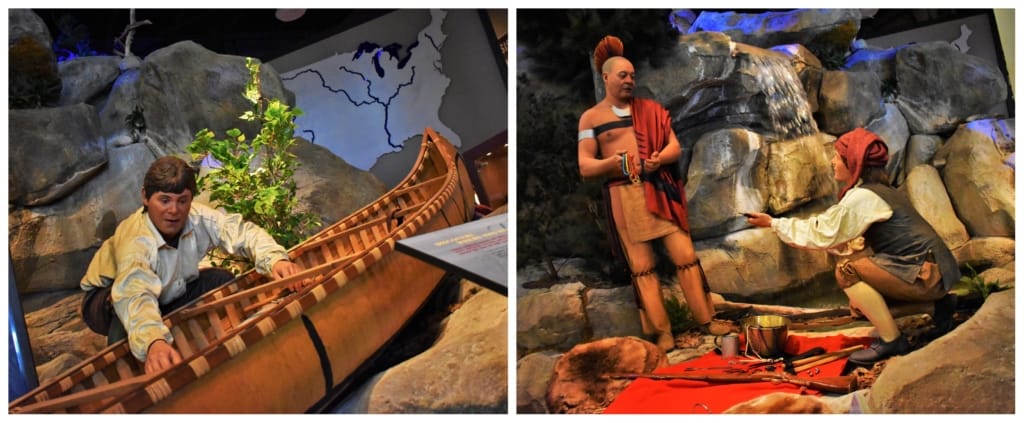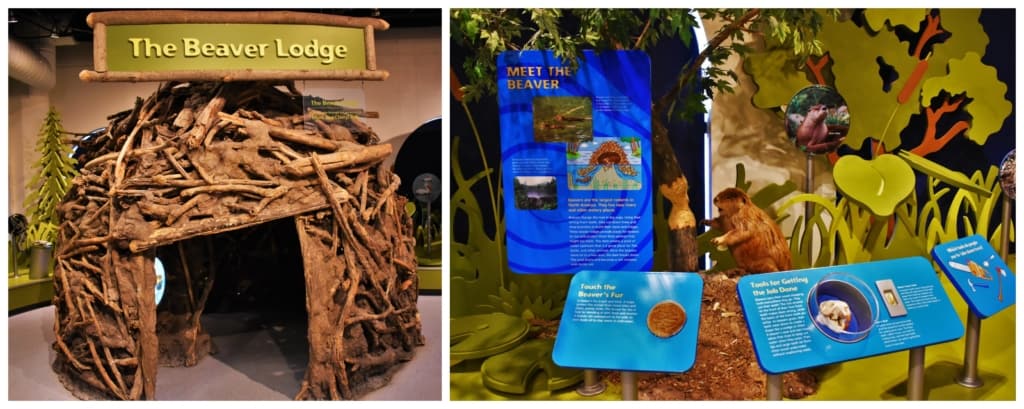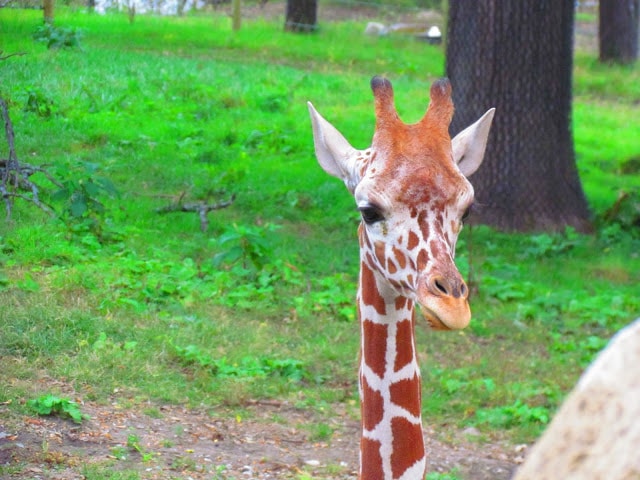There were certain attractions that were “must-sees” during our visit to Dubuque, Iowa. Being Iowa’s first city, it is no surprise that there is a river nearby. Of course, this isn’t just any river. Visiting the National Mississippi River Museum & Aquarium promised to be an adventure on a grand scale. After all, it’s the largest river in North America, and this museum is an affiliate of the Smithsonian Institute. We booked three hours to explore the exhibits designed around nature’s highways and knew that we would be pushed to the limit to see it all in detail.
We want to thank Travel Dubuque and the National Mississippi River Museum for their hospitality. rest assured all opinions are our own.

Impressive Layout
With a place as large as this, we knew that our article would only offer a cursory view of the exhibits. There are multiple buildings to be explored, so we started with the National Rivers Center. Just looking out over this first space, showed us that they have found a way to utilize every inch of space. This gallery is focused on introducing visitors to the early uses of rivers in the wilderness. From the earliest days, rivers were nature’s highway system that would allow travel throughout the lands.

Earliest People
Archaeological excavations have produced evidence of earlier civilizations all around the river’s path. This is probably no surprise to anyone since water is the lifeblood of all living creatures. A series of displays show some interesting pieces that have been unearthed. They offer a glimpse of the past and help us form a vision of what these cultures must have been like, in those early days.

Nature’s Highway
Besides the native Indians, the rivers were also used as nature’s highways by traders and explorers. These early adventurers set out to discover new regions and hopefully strike their fortunes. Some were trappers who found plenty of wildlife living in and around the waterways. These early roads were used by the explorers as pathways to the mountains, where many of the rivers had their origins. In a nearby cave exhibit, we were able to sit and listen to stories of early explorers like Samuel de Champlain and Jacques Marquette.

Exploring New Lands
The fur trade was a huge driver behind the exploration of North America. Trappers pushed further and further inland, in an effort to discover pristine areas. The rivers provided an alternative to overland travel. As the push into new territories expanded, it brought with it contact with new native tribes. These early explorers discovered that many of the native Indians had long ago established a trading system between tribes. The Europeans did bring new merchandise, that was eagerly sought after by the native people.

Splash Zone Ahead
Now that we had explored the origins of traffic on nature’s highway, it was time to roll up our sleeves and get wet. The RiverWorks Splash Zone is designed to let kids of all ages discover the many uses of nature’s highways. A series of exhibits allowed us to get hands-on while learning how ships navigate the rivers and use locks systems. Nearby, there are a set of small aquariums that hold various species of aquatic species.

Little Learners
One of the animals most associated with rivers is the beaver. At the National Mississippi River Museum you can explore a beaver’s lodge, while you learn more about this creature. Displays explain how they are able to chew through trees with such efficiency. We even got to feel a little of the beavers pelt, which was so sought after by those early fur traders. This whole space is fun for kids, but parents can enjoy it, as well.

In Touch With Nature
Speaking of getting to feel creatures. Step on over to Down in the Delta for another fun experience. Here you can get up close and personal with stingrays, at their 2250 gallon touch pool. These gentle beings glide through the water, as guests are invited to feel their slippery skin. Also in this area, we found more aquariums. Most of these focused on creatures that live close to where the Mississippi River flows out to meet the ocean. The largest aquarium in the museum resides near this area and features an assortment of saltwater species from the Gulf of Mexico.

Watery Inhabitants
With our time passing faster than we wanted, it was time to move over to the Mississippi River Center. We passed the aviary on our way to the other complex. Here the focus turns from all of nature’s highways to the one great river in Central North America. Inside this building, we found more aquarium style exhibits. Each one focused on a specific ecosystem that can be found along the river’s path. Still, water areas are home to water snakes, turtles, and dozens of bird species. Deepwater holds interesting creatures like the paddle-fish. There is even an exhibit about the bayou area, which includes the American alligator.

Timely Education
During our exploration of this building, we noticed additional exhibits on the second floor. What we found there, was a grouping of rotating displays that showcase historical artifacts about Dubuque, Iowa. One that caught our eye, was a model of the Fenelon Place Elevator. While the main museum focuses on nature’s highways, this exhibit showcases one a little further inland. Since this was one of the attractions on our itinerary, it was perfect that we got a chance to discover how it operates. (You can read our article about the elevator here.)

Rotating Exhibit
The other half of the second floor holds a temporary exhibit. During our visit, it was all about fairy tales. The brightly colored displays give children a chance to immerse themselves in the stories that they have heard for years. Of course, there were a few obscure tales that we were unfamiliar with. Space was well designed and laid out to accommodate areas for play.

Heading Into the Woods
Each of the specific tales included at least one interactive part in the display. Visitors were invited to slide down the beanstalk or try on Cinderella’s glass slipper. It was an entertaining exhibit, even for grown-up kids like us. These two areas reminded us of the outdoor theater we experienced in Lindsborg, Kansas. (You can read about it here.) Once we finished playing around in this area, we realized that time was quickly running out on our visit. We quickly made our way to the outdoor space, between the centers. In this area, visitors have a chance to check out a paddle-wheel driven river dredge ship. There are even more exhibits to see, but we’ll leave some surprises for your visit. You may want to plan for more than three hours.






Thank you so much, i never knew this existed.
It is our pleasure. We hope you get an opportunity to visit.
Thanks for the great comments on the National Mississippi River Museum & Aquarium. I am the former director of education at the museum & aquarium, and we are very proud of the exhibits and intricate stories of the Mississippi River Watershed. This watershed drains water from over 40% of the United States including 31 states and two Canadian provinces. It is always a pleasure to read other peoples evaluations and reactions to the stories and exhibits found at the National Mississippi River Museum & Aquarium in Dubuque..
So glad to hear that you enjoyed our article. We loved exploring the museum and learning the stories of the people who traveled the waterways.